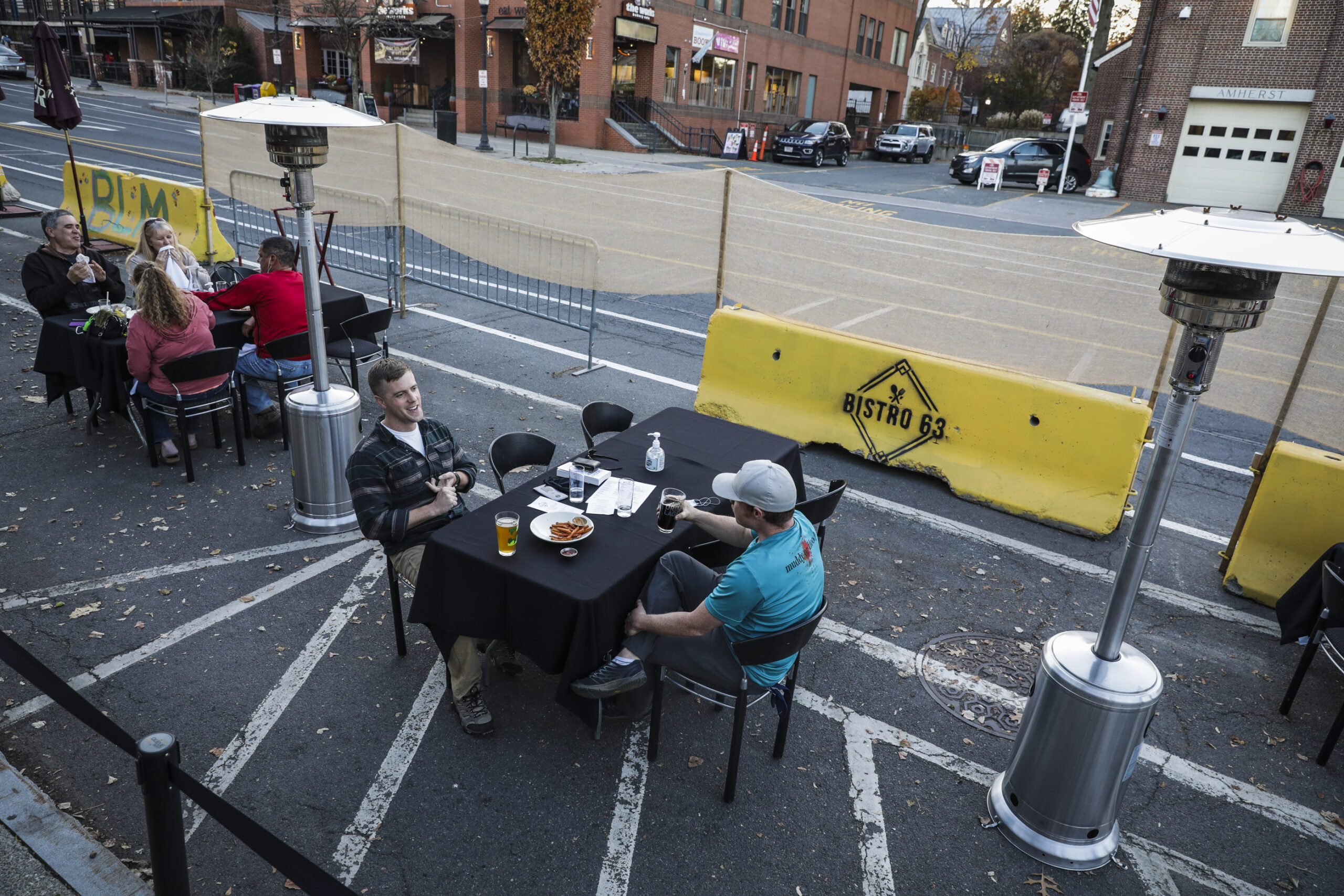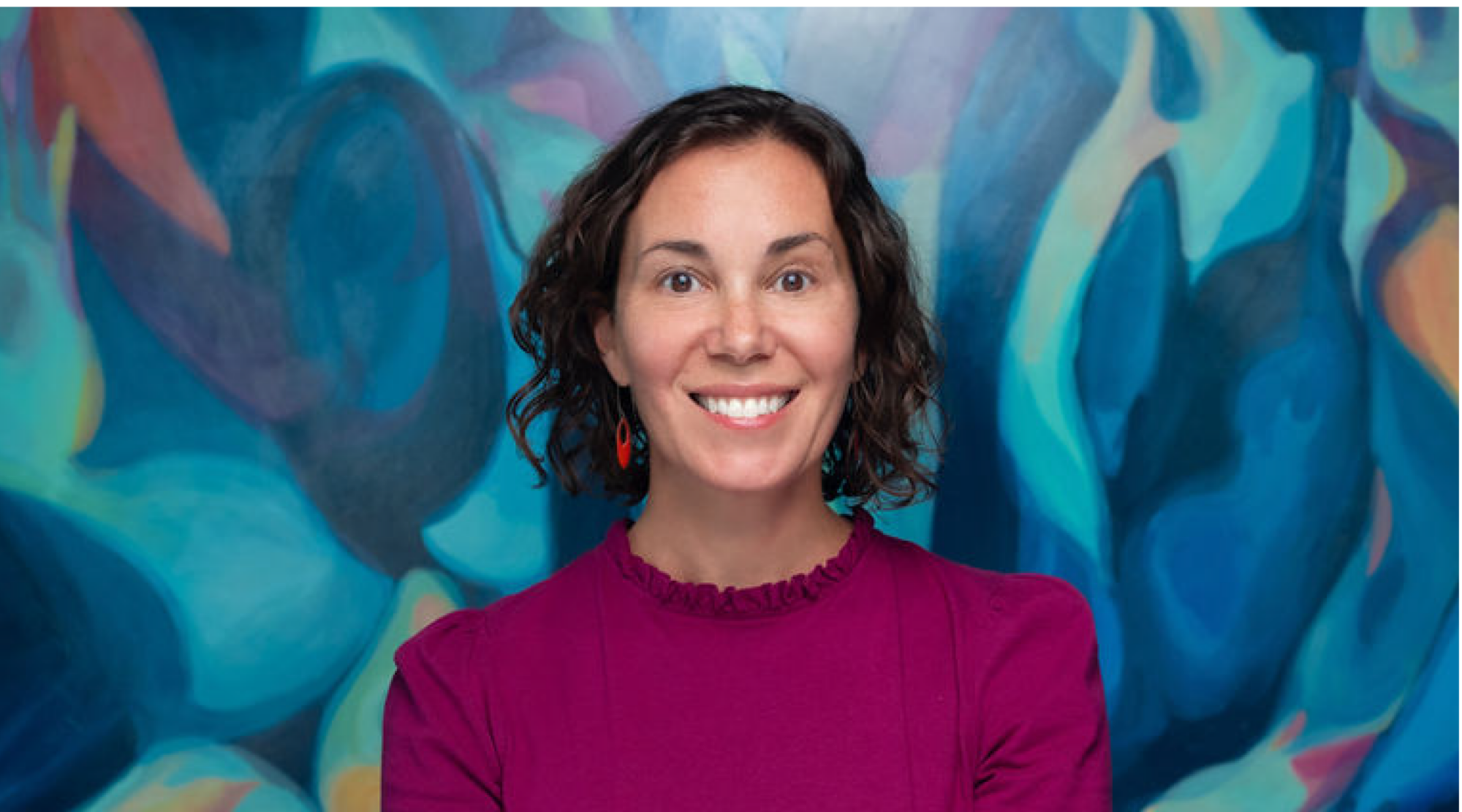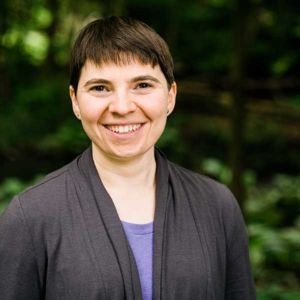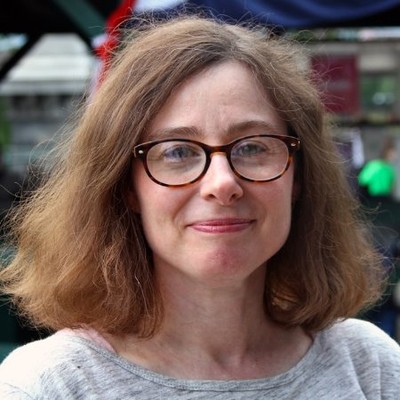In 2020, communities around the world were thrust into crisis—a devastating public health threat that also completely upended how we interact with each other and our surroundings. The infrastructure we all relied upon to move around our cities and connect with our neighbors suddenly felt riskier, if not inaccessible.
Here in Massachusetts, a state with dense town centers, heavy reliance on public transit in Eastern Massachusetts, skinny streets and sidewalks, and an unshakeable fondness for gathering together, it became clear that we needed to change our streets and public spaces—and fast.
In response, a joint funding effort emerged, groundbreaking in its speed and flexibility. Funded by the Baker-Polito Administration with support from the Barr and Solomon foundations, Shared Streets and Spaces would go on to support more than 300 projects spanning from Pittsfield to Provincetown, all of which made our daily lives safer and more socially connected during these vulnerable and isolating times, while propping up small businesses and local economies.
The initiative showed us what kind of infrastructure change is possible in weeks and months, not years. It also taught philanthropic funders just what is possible when you move money with greater speed and flexibility—and in close partnership with community groups and the public sector—to meet local needs. It taught the public sector that there is meaningful local demand for these types of installations.
The results have been remarkable, and a little surprising, considering this is not how we normally operate, nor is it work we had planned to fund pre-COVID. We’re particularly proud of the fact that more than half of the projects were built in environmental justice communities. But perhaps most impressive is the range of projects funded, based on each locality’s unique needs. There’s a good chance you noticed one of them pop up in your own neighborhood.
In places like Lynn and Everett, priority bus lanes were quickly installed to make public transportation safer and more reliable for essential workers. Other bus improvements—including changes to traffic signal patterns, and improved shelters in places like Boston, Brockton, and Tewksbury—were prioritized to reduce overcrowding and increase efficiency.
Cycling underwent a renaissance in 2020 as a fast, healthy, and socially distanced way to get around. Funded projects included new bikeshare stations from Holyoke to Salem, expanded bicycle parking, and new protected bike lanes and trails.
Communities across the state saw increased need for safe walking and access to paths and trails, especially among seniors and youth. There was incredible demand, and many projects helped kids get to school and older adults get to senior centers, residences, and town centers safely.
Streets and parking spots were repurposed to allow safe outdoor socializing and boost local business. Barriers adorned by local artists protected tables and chairs from traffic. Communities like Natick, Peabody, Melrose, and New Bedford installed street furniture, public art, and decorative lighting to help residents connect during the long, dark winter.
You can see the full range of projects in this creative commons photo gallery on Flickr. Or, browse a few of the images below.

These may seem minor, but those of us who work in mobility know that small adjustments can improve lives and add up to transformative change. This approach also unlocked permanent infrastructure improvements, on far faster timelines than municipalities generally believe to be possible.
While such planning usually involves lengthy discussion of hypothetical pros and cons, we were able to test out projects with inexpensive, temporary materials that had immediate positive impact. This then allowed residents to experience the benefits right away, helped planners, municipal staff, and community members iterate their concepts based on real world use, and informed longer-lasting improvements. Many communities, quickly recognizing the shared benefits of multi-use streets and plazas, are already moving to make these changes permanent.
Municipal governments are clearly learning a lot, but what about the philanthropic and state partners? We all needed to rethink our way of working to be as responsive as possible. Here’s how we pivoted to meet the needs:
Funding was fast and flexible. The most important part of the program was that it needed to move money and complete projects quickly. The Massachusetts Department of Transportation (MassDOT) set up a rolling application and encouraged quick-build projects that would have an impact right away. State and foundation grantmaking guidelines were kept intentionally straightforward, allowing communities to lead the way in identifying their greatest needs and designing the right solutions. Foundations helped applicants craft their applications through easy-to-access technical assistance, expediting their grant proposals.
MassDOT and private philanthropy worked in close partnership. In a chaotic time when we were all facing problems we’d never dealt with before, we were able to lean on our long-standing relationship. The trust existed among multiple entities which made the work go remarkably smoothly. The Solomon Foundation in particular stood this up by holding weekly convenings of a wide range of interested parties to coordinate, avoid pitfalls, and replicate success.
We funded more than just projects. This was an all-hands-on-deck moment. So philanthropic partners were able to provide funding, but also supplemented local efforts with technical assistance, evaluation, and communications support. The Barr Foundation supported technical guidance to help applicants design successful projects and proposals, thereby allowing more grantees to access the MassDOT program, even if their own resources were limited.
The Shared Streets and Spaces program has helped Massachusetts reimagine its streets as public spaces for people. It also helped the government and philanthropic partners behind the program reset their expectations about how fast they could move and how closely they might work together. This was a unique, difficult moment in time, but also one that can inform how we work going forward.
We now know that, with the right community support and leadership, it’s possible to create a new bike lane, public plaza, and new options for seniors and children in a matter of weeks instead of months or years. Some of the processes we’ve relied on for decades weren’t necessarily helpful to us. Now that we know what government and foundations can do when we listen and are truly responsive to communities’ needs, what might we do next?






